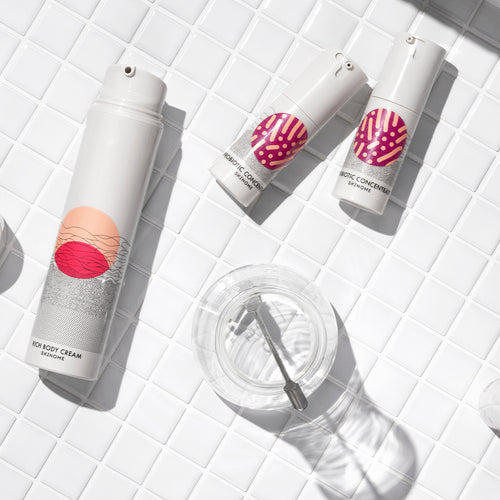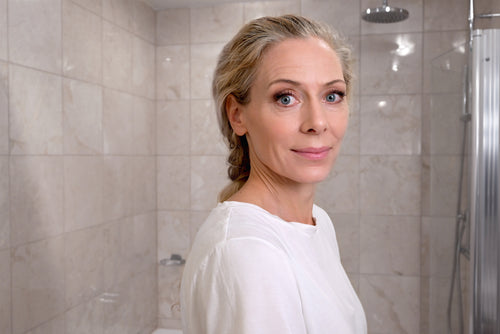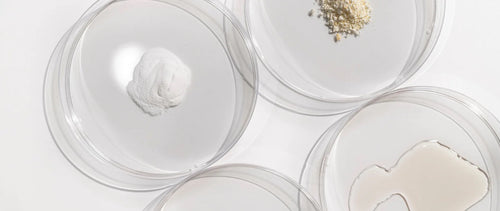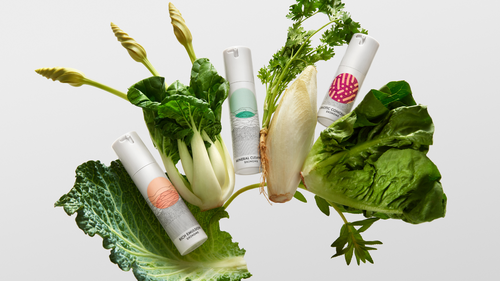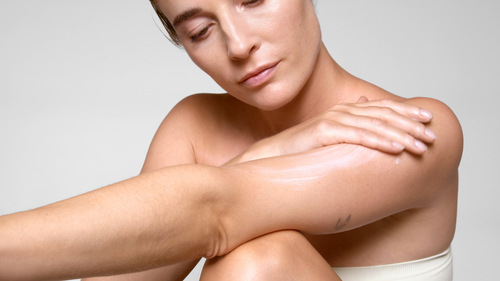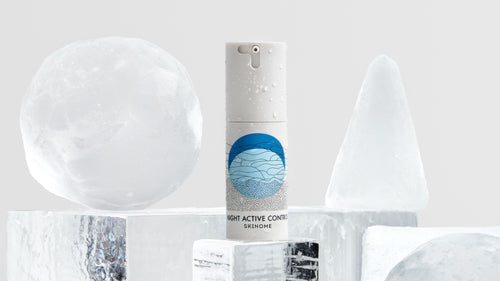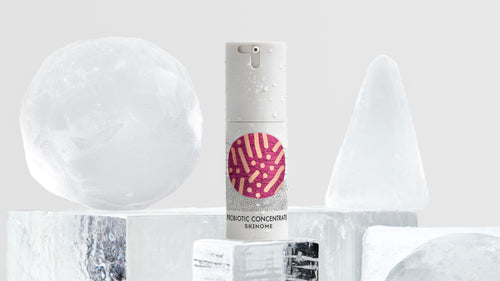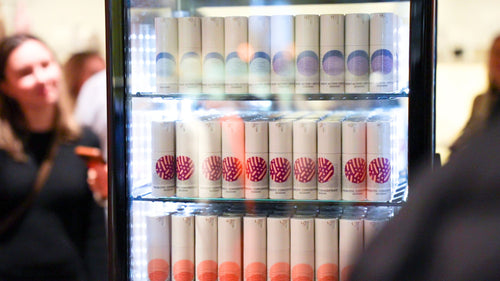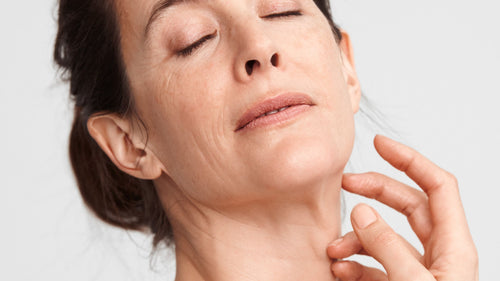What is sebum and do we really need it?
Sebum is a complex mixture of lipids produced by the sebaceous glands, which are an important endocrine organ* located in the dermis of the skin. Sebum's main functions are believed to be protection against water loss that is important for naturally moisturizing the skin as well as antimicrobial protection. Now that we've discussed the important role of sebum, it's time to go over some important misconceptions and truths about sebum.
Sebum leads to oily skin.
It is important to emphasize that the presence of sebum in itself does not equal oily skin, but situations where oversized sebaceous glands produce excessive amounts of sebum can lead to oily skin. While there is no clear explanation as to why some users are more prone to overproduction of sebum than others, we would like to note some factors that are believed to increase the risk of developing oily skin.
According to researchers Endly and Miller (2017), men are more likely to produce more sebum due to higher testosterone levels in the body. But having more sebum production can actually be quite good. It protects the skin from drying out, and men who normally have oilier skin compared to women have less problems with dry skin and sensitivity.
The hormonal aspect of sebum production is an interesting phenomenon, where sebum production declines with age as hormone levels also decline. Several studies also report that sebum production levels can vary depending on different environments and seasons, e.g. it may be higher during the summer and spring seasons and in more humid environments. Diet is another important factor to consider. We would like to refer to the research that researcher Fulton and his team developed, where 5 male volunteers were given two chocolate bars daily for a period of one month. Although the researchers did not conclude that there was a significant correlation between fat and sebum production, at the end of the experiment, the accumulated sebum increase was observed in 3 out of 5 volunteers, indicating that food can affect the production processes of the sebaceous glands. Furthermore, clinical studies also suggest that certain product classes such as milk and dairy products, saturated fats and hyperglycemic carbohydrates influence the development of acne, and therefore a diet rich in vegetables and fish products is recommended.
Sebum is responsible for the development of various skin conditions, such as acne.
Situations where the sebaceous glands are overstimulated and produce more sebum than the pores can handle can actually lead to various skin conditions, such as the previously mentioned oiliness of the skin, clogged pores and can ultimately lead to acne breakouts. If unwanted skin conditions develop, sebum overproduction can be tamed by using cosmetic products containing ingredients such as niacinamide, zinc or organic acids. A study developed by Andrade and the research team (2018) showed how the application of active ingredients affects acne-prone skin. During their study, a cosmetic formulation (consisting of niacinamide, pyridoxine tris-hexyldecanoate, and zinc PCA) was applied over a six-week period, twice a day, to 16 study participants' skin (forehead, moles, and chin regions) resulting in a 60% reduction in acne lesions ; despite this, the applied products did not reduce the barrier functions of the skin.
Estrogen and vitamin A have also shown positive results in controlling sebum production. Before we review sebum-friendly ingredients from Skinome's product line, we would like to emphasize that each person's skin condition is unique and that all treatment methods for skin conditions must therefore be discussed and carefully evaluated with clinicians before being adapted.
Skinome's products contain previously mentioned ingredients that support the skin in controlling sebum production, for example the organic lactobionic acid or so-called PHA acid is found in Skinome's Light emulsion and Night Active Control. Niacinamide which is a form of vitamin B3 is also found in several of our products, for example Light emulsion, Mineral cleanser, Night Active, Night active Retinol, and it has been shown to be an effective ingredient to improve barrier functions, reduce wrinkles and sebum production, hyperpigmentation control and a general improvement for acne skin. Finally, Zinc Ascorbate (vitamin C) and Zinc PCA, which are known for their antimicrobial and antioxidant properties, are included in our products Night Active and Night Active Retinol as well as in Rich emulsion.

It's a common myth that you have to remove sebum.
Although excessive washing and aggressive cleansing may at first seem like an intuitive step to remove excess sebum, research data shows that this can remove lipids from the skin's outermost layer, leading to skin dryness and thus significantly affecting the barrier functions that lipids ensure for the skin. Research studies with animal models have shown that there is a connection between abnormalities in the skin and fur and certain disturbances in the surface lipid pathways. For example, in one study it was reported that KO of the melanocortin-5 receptor (MC5-R) resulted in severe defects in water repellency and thermoregulation due to reduced production of sebaceous fats. In conclusion, sebum is important for our skin's defenses and aggressive skin treatment methods or cleansing can negatively affect the condition of the skin and cause dryness, sensitivity or even rosacea.
Skinome products show improvement in acne-prone skin in a 2021 study.
If you produce too much sebum and get pimples or clogged pores at regular intervals, we recommend that you control the excessive sebum production. You can start by using Light emulsion day and night and clean the skin only in the evening with a mineral cleanser. If necessary, you can add Night active Control as a concentrate to Light Emulsion as a night treatment.
The combination of Light emulsion, Night active Control and Mineral Cleanser has proven to be very effective for acne-prone skin. In November 2021, Skinome conducted a study involving 15 participants representing the age group 23 - 43 years. Study participants had oily, combination, and acne-prone skin, and two-thirds of subjects also had sensitive skin. During the study, participants used Light Emulsion and Night Active Control, and treatment results were evaluated after four weeks. Participants' self-evaluation forms showed that their skin felt less oily when using the Skinome products. The evaluator evaluation showed that study participants had 75% fewer acne papules/pustules, 25% fewer red pimples, and 40% fewer red areas. Finally, an instrumental analysis using an Antera 3D camera showed that after a four-week test period, the skin was less pigmented, smoother and had fewer irregularities, as well as improved skin redness.

Night Active Control.
Our Night Active Control contains the skin's endogenous retinol because our focus is to mimic the skin's natural composition as much as possible. In this formula, we have chosen a slightly higher concentration, 0.1%, because oily/combination skin is more tolerant than drier skin is.
Light emulsion.
Our Light Emulsion is an ultra-light gel emulsion and contains substances that reduce sebum production and regulate the maturation process of the skin's keratinocytes, which helps open the pores and reduces the risk of them becoming clogged and irritated. The light emulsion formula has a light texture and the blend of oils is selected to suit oilier, acne-prone skin.
Mineral cleanser.
Our Mineral Cleanser is a cleansing cream that effectively removes dirt without drying out the skin. It is effective yet microbiome-friendly, as it does not contain any ingredients that can disturb the skin's good bacteria that are needed for the skin to be in balance. Among the active ingredients are postbiotics from Lactobacillus ferment, which helps to bind water in the skin for increased hydration, and for a gentle smoothing effect, we use low dose BHA acid (0.25%) which helps to remove dead skin cells and reduce the pore size.
* Endocrine organ: an organ that develops hormones and releases them into the bloodstream so that they can be distributed to various tissues and organs.



References
Andrade, J., L. Wagemaker, T., Mercurio, D., & BG Maia Campos, P. (2018). Benefits of a dermocosmetic formulation with vitamins B3 and a B6 derivative combined with zinc-PCA for mild inflammatory acne and acne-prone skin. Jornal De Investigação Biomédica E Biofarmacêutica (Em Linha), 15(2), 214-223.
Pappas Apostolos (2009) Epidermal surface lipids, Dermato-Endocrinology, 1:2, 72-76, DOI: 10.4161/derm.1.2.7811
Chen W, Kelly MA, Opitz-Araya X, Thomas RE, Low MJ, Cone RD. Exocrine gland dysfunction in MC5-R-deficient mice: Evidence for coordinated regulation of exocrine gland function by melanocortin peptides. Cell 1997; 91:789-98.
Definition of endocrine system—NCI Dictionary of Cancer Terms—National Cancer Institute (nciglobal, ncienterprise). (2011, February 2). [NciAppModulePage]. https://www.cancer.gov/publications/dictionaries/cancer-terms/def/endocrine-system
Endly, D., & Miller, R. (2017). Oily Skin: A review of Treatment Options. The Journal of Clinical and Aesthetic Dermatology, 10(8), 49-55.
Fulton JE Jr, Plewig G, Kligman AM: Effect of chocolate on acne vulgaris. JAMA 1969; 210: 2071–2074.
Gillbro Johanna. The Scandinavian Skincare Bible. 2020. Scribe Publications. ISBN: 9781912854943
Melnik BC. Linking diet to acne metabolomics, inflammation, and comedogenesis: an update. Clin Cosmet Investig Dermatol. 2015 Jul 15;8:371-88. doi: 10.2147/CCID.S69135. PMID: 26203267; PMCID: PMC4507494.
Passi S, De Pità O, Puddu P, Littarru GP: Lipophilic antioxidants in human sebum and aging. Free Radical Res 2002; 36: 471–477.
Picardo M, Ottaviani M, Camera E, Mastrofrancesco A. Sebaceous gland lipids. Dermatoendocrinol. 2009 Mar;1(2):68-71. doi: 10.4161/derm.1.2.8472. PMID: 20224686; PMCID: PMC2835893.
Sakuma TH, Maibach HI. Oily skin: an overview. Skin Pharmacol Physiol. 2012;25(5):227-35. doi: 10.1159/000338978. Epub 2012 Jun 20. PMID: 22722766.
Skinome NAC Acne study, conducted November 2021.
